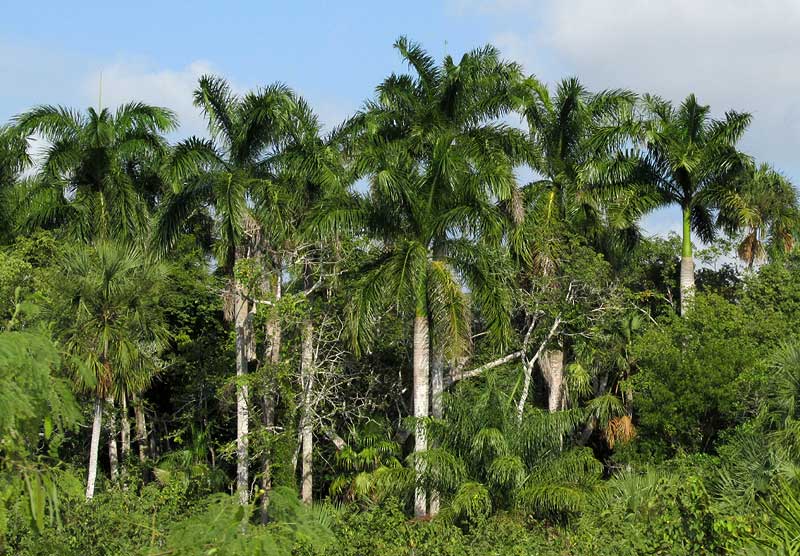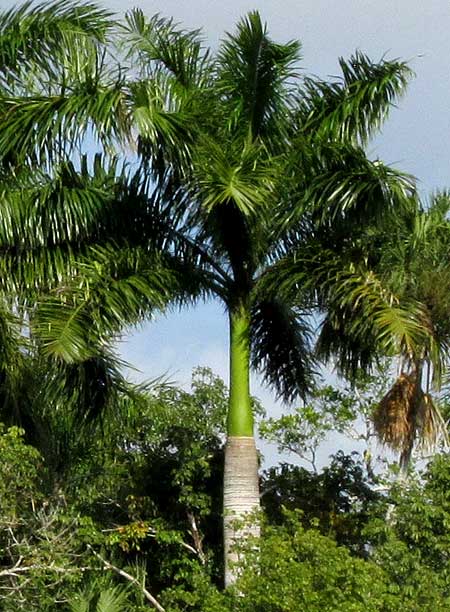Excerpts from Jim Conrad's
Naturalist Newsletter

from the January 11, 2015 Newsletter issued from Río Lagartos, on the Yucatan Peninsula's northern coast (~N21.60°, ~W88.16°), Yucatán state, MÉXICO
ROYAL PALM
Joyously standing in summery, ear-flapping wind in the back of Diego's black pickup truck with flamingo and fish decals artfully applied to its sides, ostensibly we were looking for rare birds for a Finnish birding guest, but my eyes couldn't be taken off the vegetation that rolled by, for here just an hour or so east of Río Lagartos the seasons were rainier and the vegetation higher and lusher, with species not seen farther west. Suddenly there was a whole forest of some old-friend palms, palm compadres I've known for many years as Royal Palms, ROYSTONEA REGIA, but these Royal Palms were doing things that surprised me.
What surprised me was that I'm used to Royal Palms standing regally in straight lines along streets and plantation entry lanes, planted in straight lines. But these Royal Palms stood shaggily and haphazardly in wild forest, as seen from the back of Diego's famous Flamingomobile at the top of this page. A close-up showing the Royal Palm's main field marks is shown below:

Here's what to notice:
I myself have written that "Royal Palms are native to southern Florida, southeastern Mexico, including the Yucatan, Cuba, the Bahamas and the Cayman Islands. Earlier the Florida populations were regarded as a different species, but genetic studies show that they are not distinct enough to be regarded as a separate species..." so all along I've known that wild Royal Palms should be growing here in the Yucatan. However, during all my years of Yucatan-wandering I've never seen them, so I'd begun suspecting that they were practically extinct here, except where planted.
I'm told that all the Royal Palms in our area occur in that small forest we zoomed through and that all the land there is owned by one person, who recognizes the trees' importance.